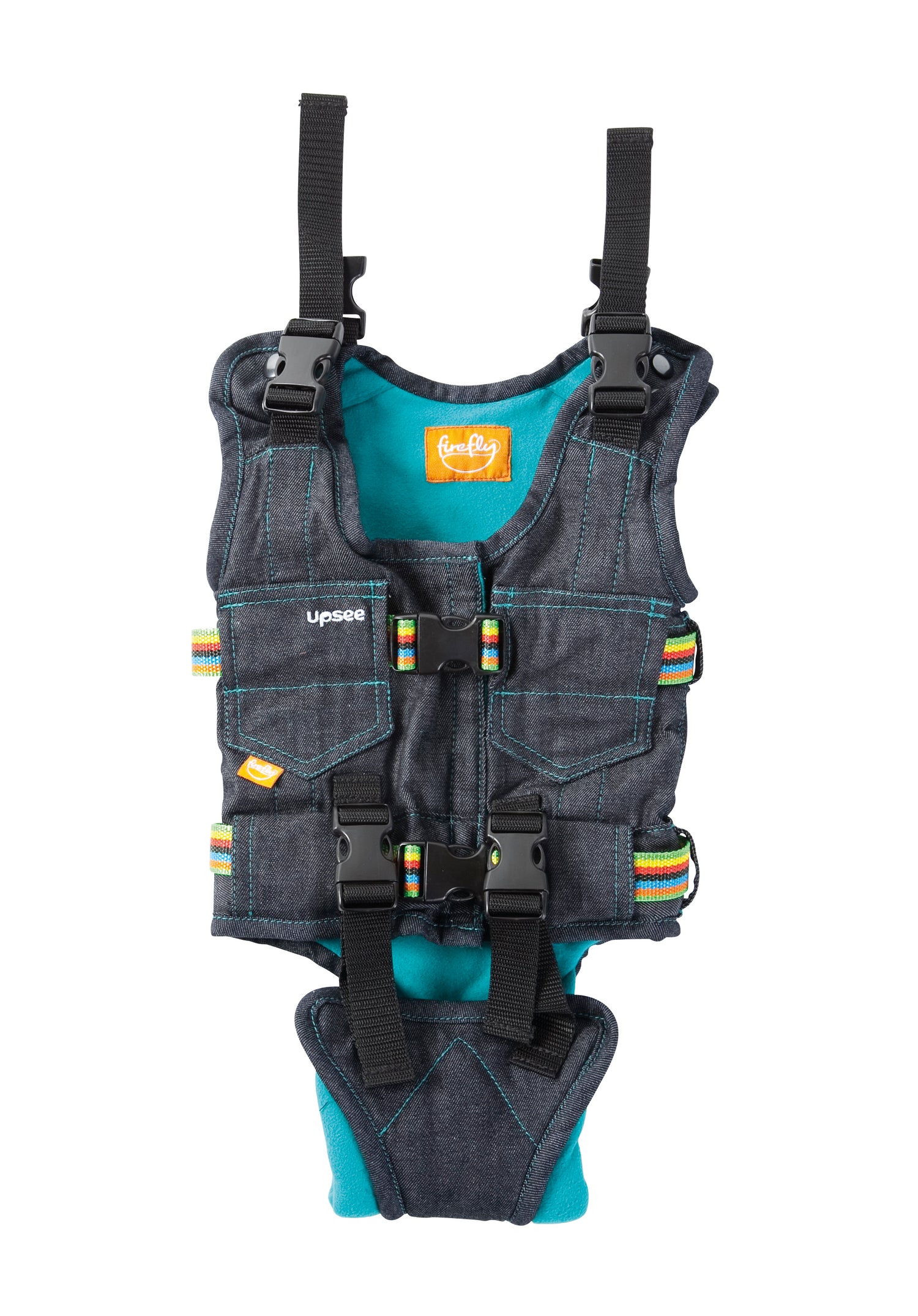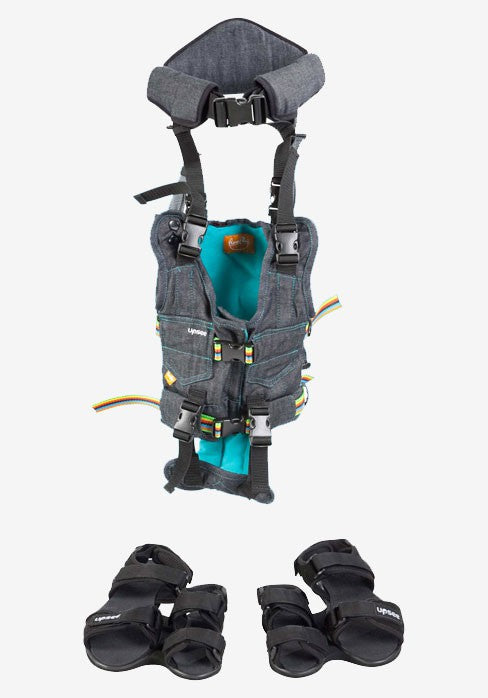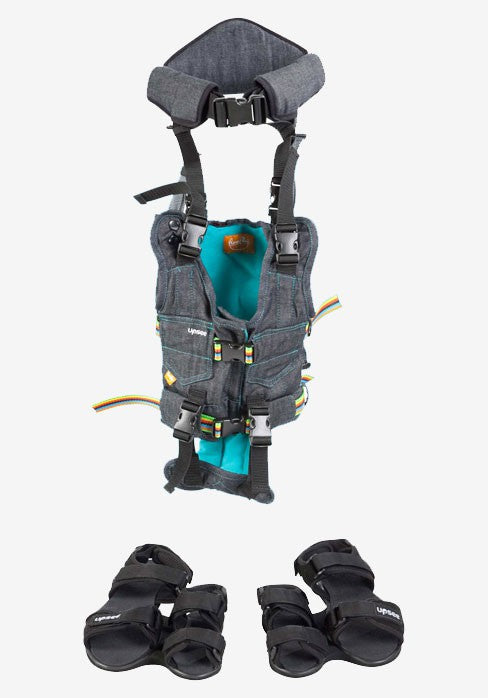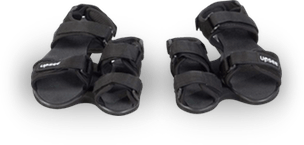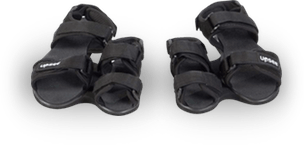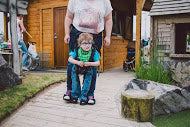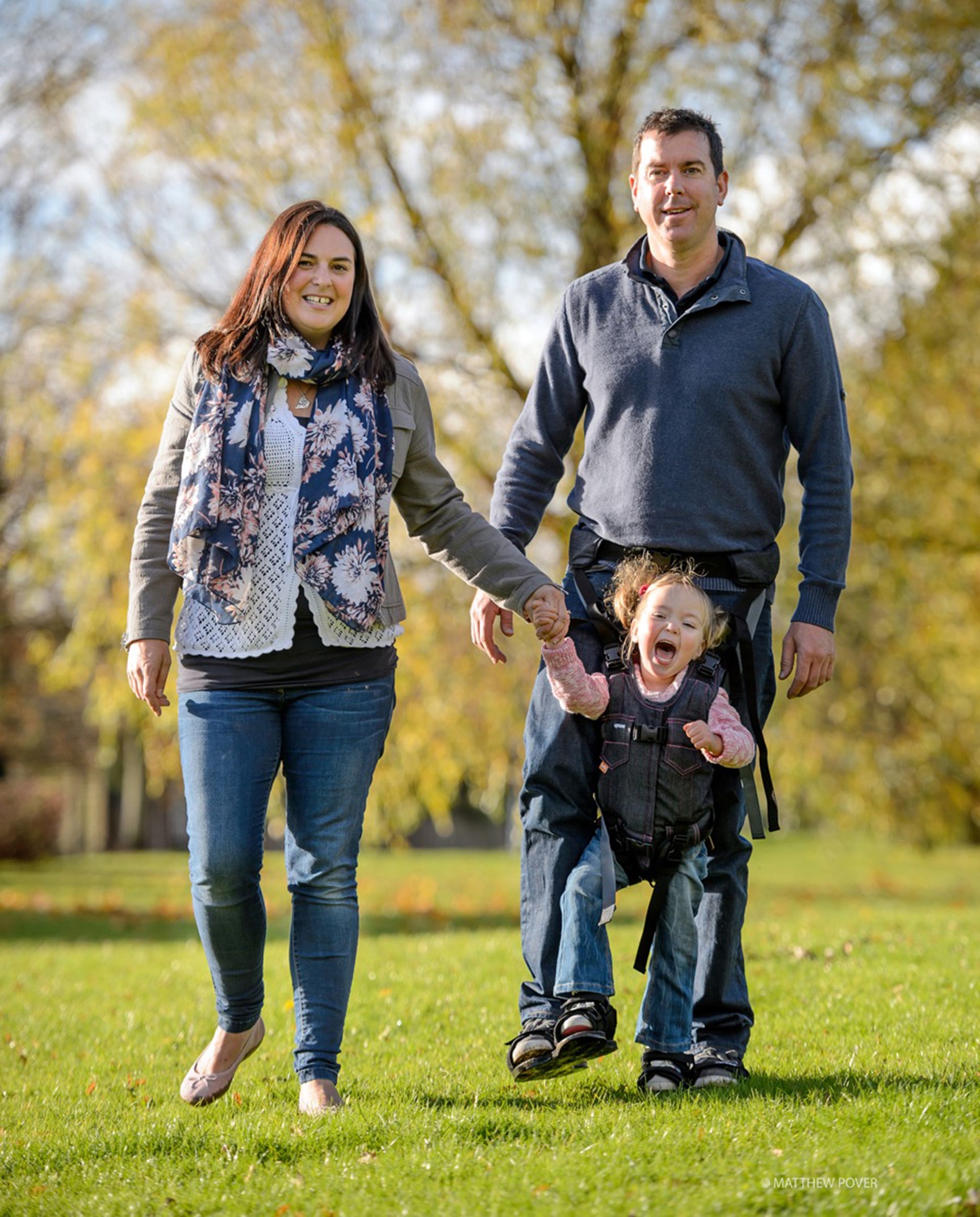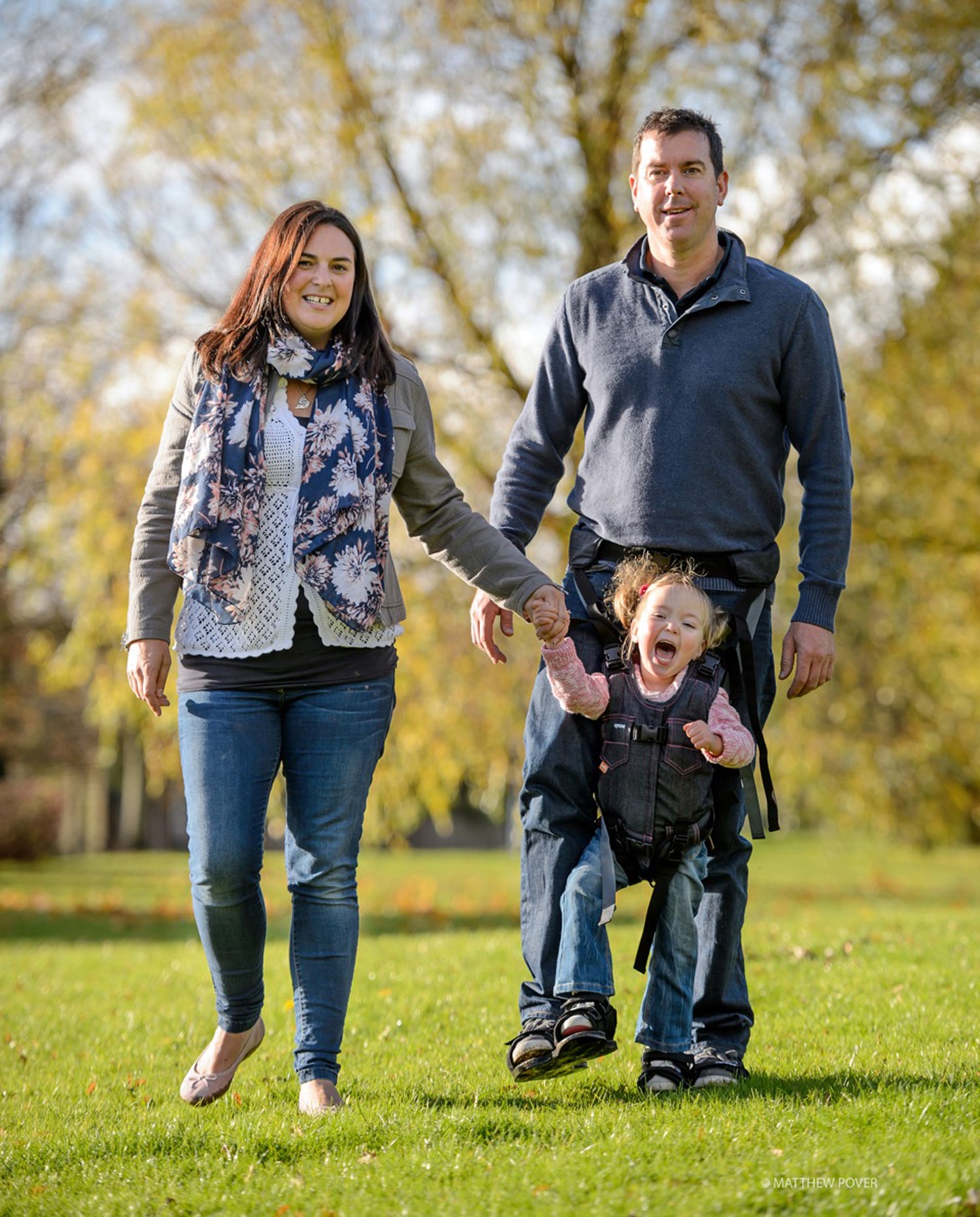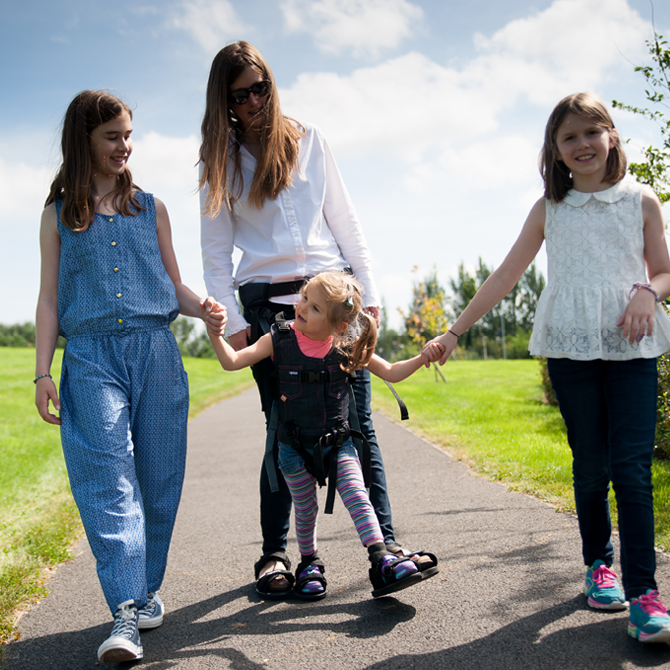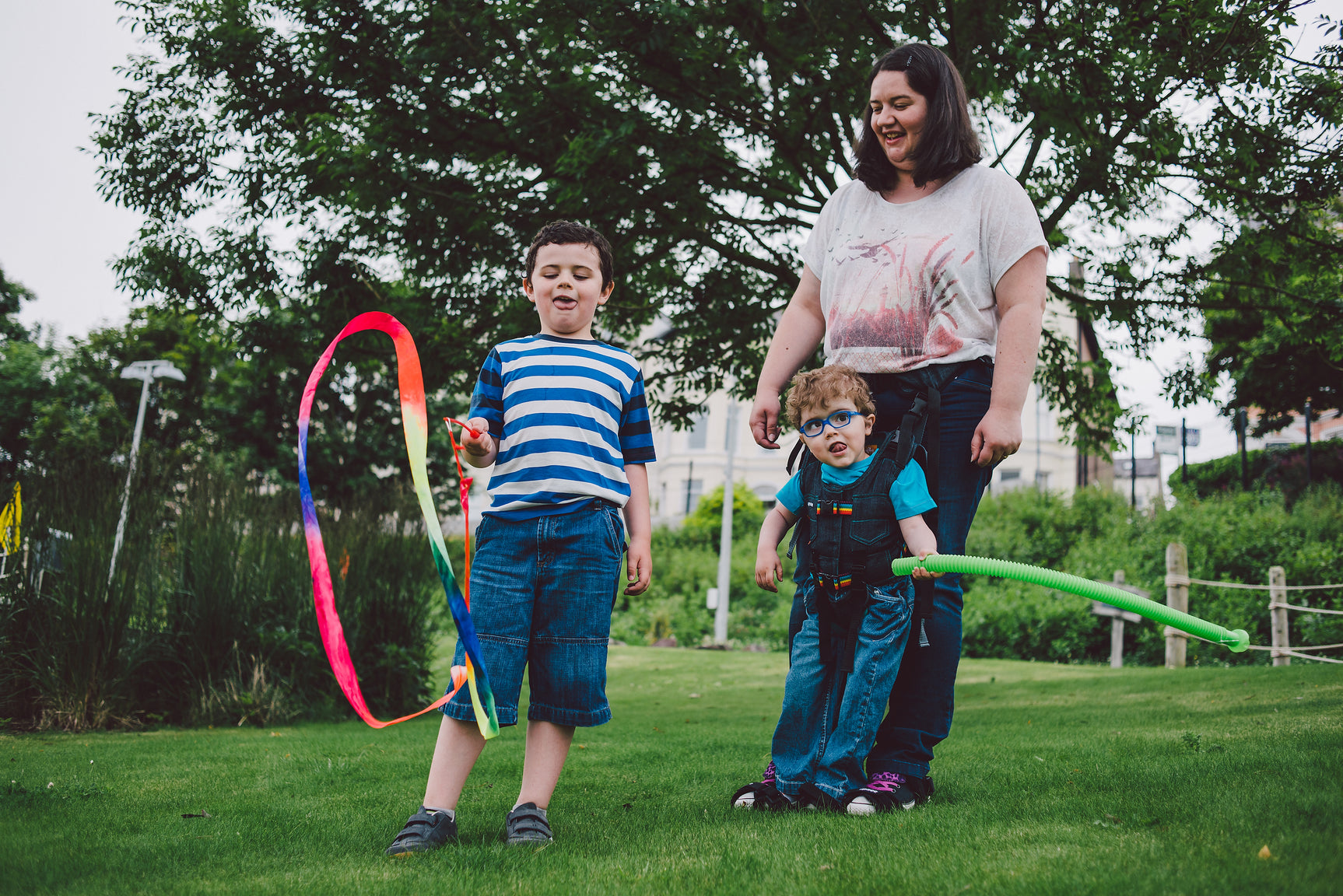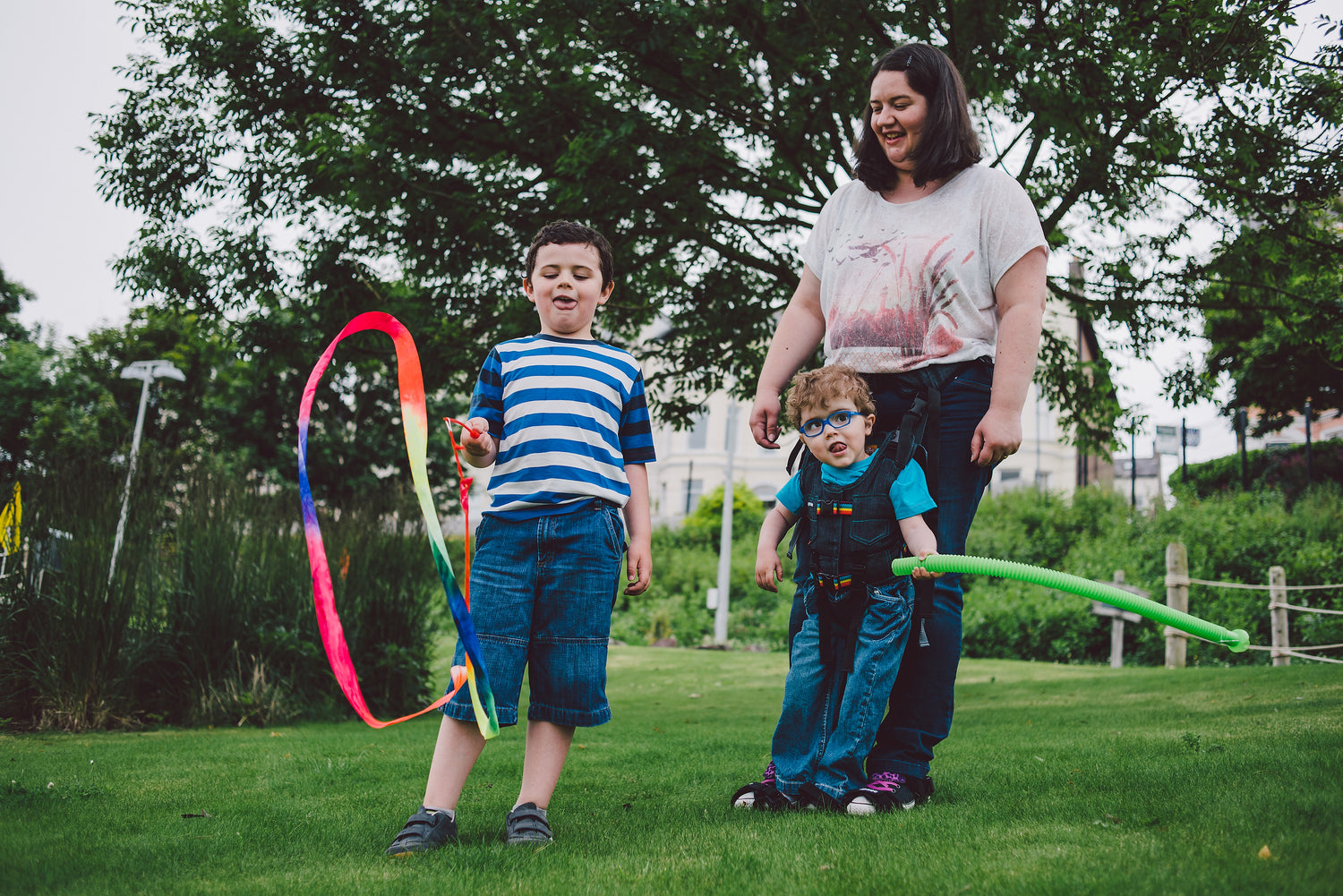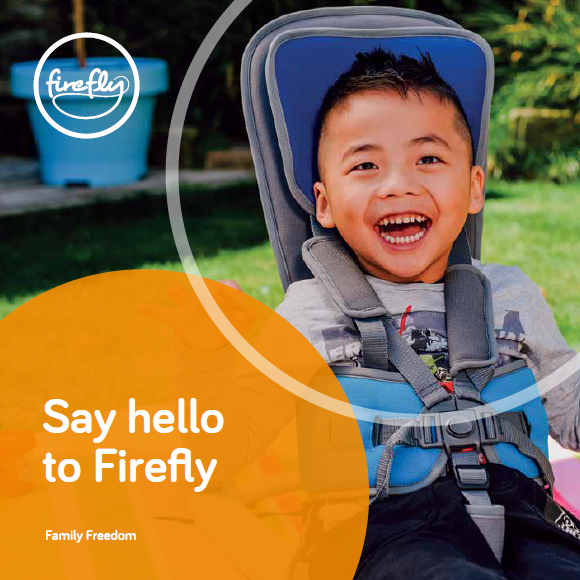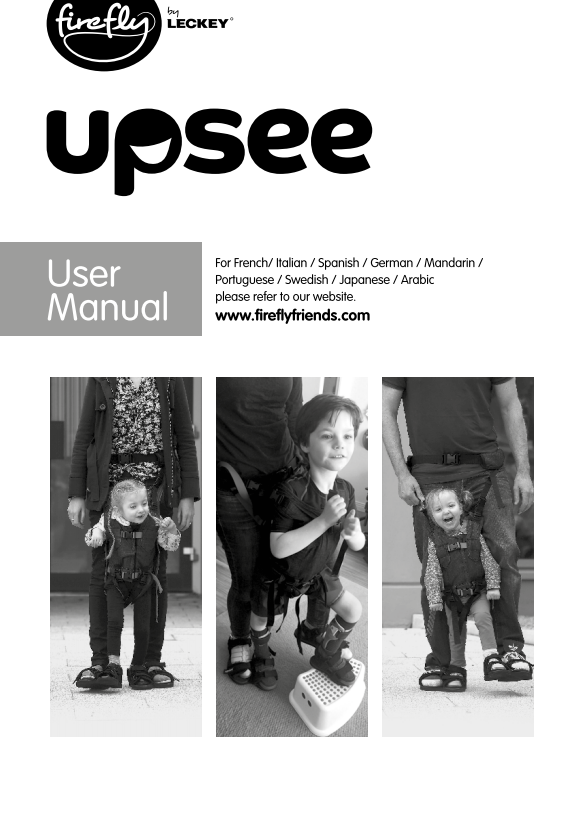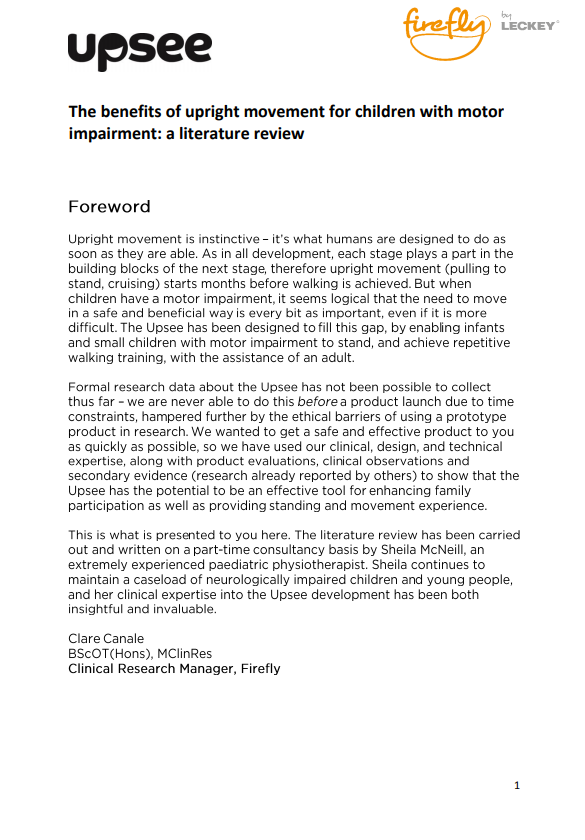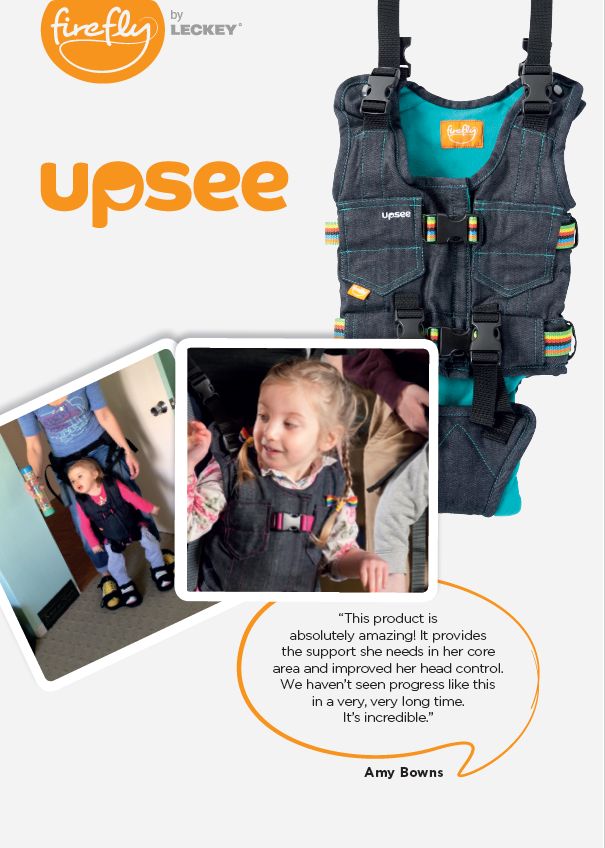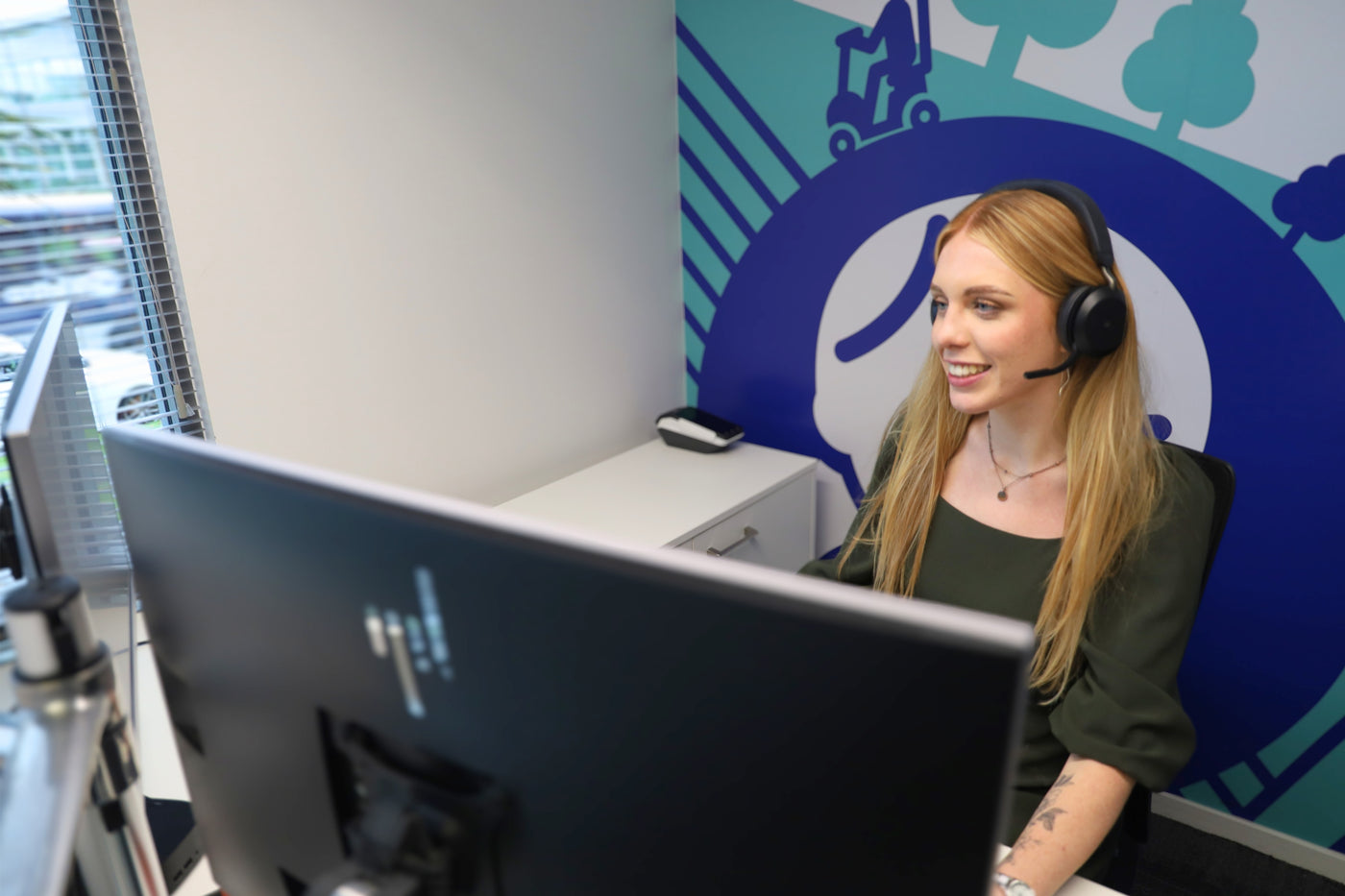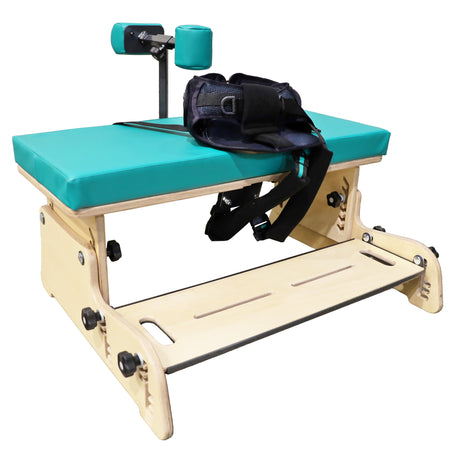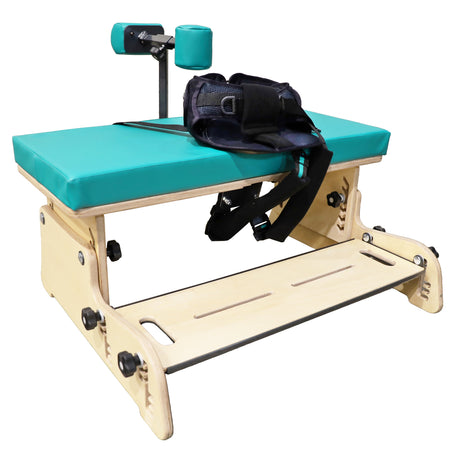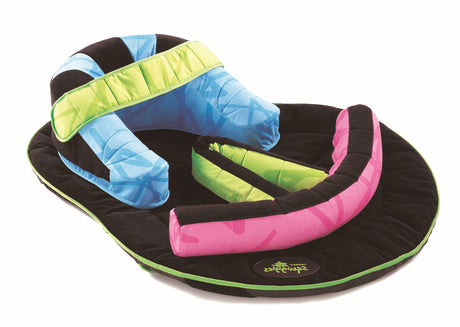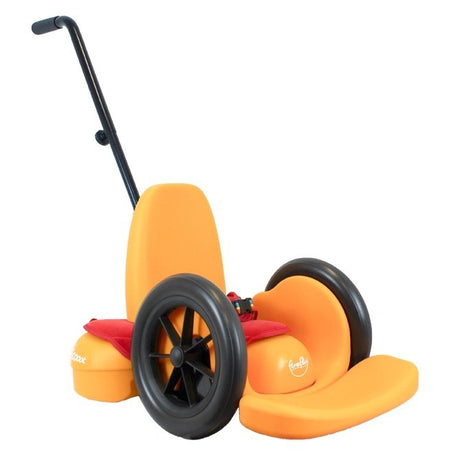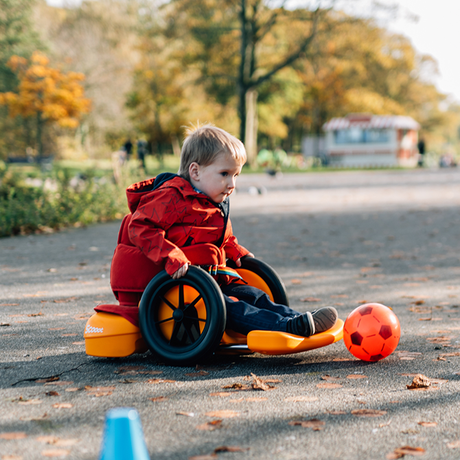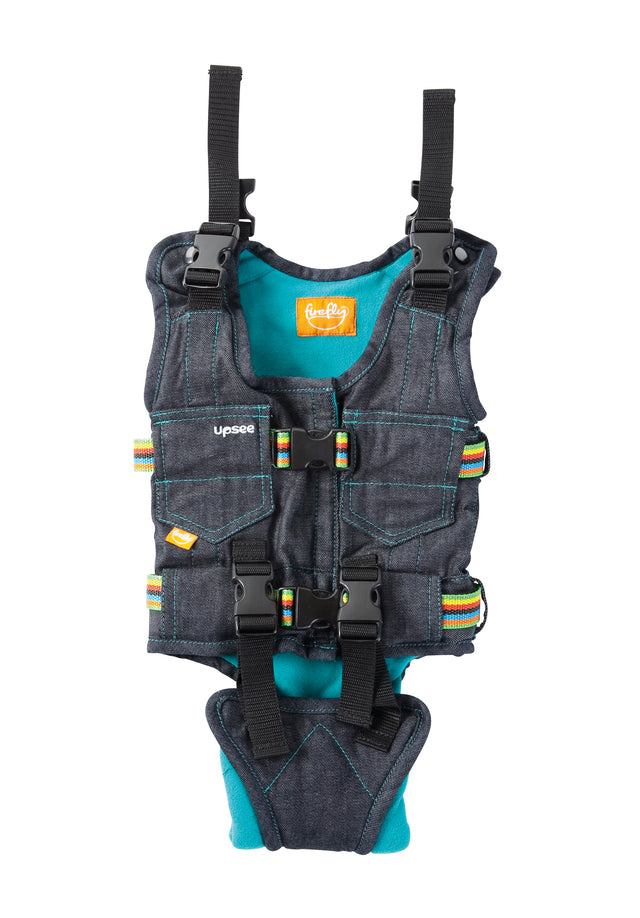Firefly Upsee
The Firefly Upsee is a simple harness mobility device for children that lets them walk - and dance - with the help of an adult.
Please note the selected product option is not available for trial.
Product is currently out of stock
This product is currently not in stock but is available to pre-order. Once ordered we will contact you with an approximate delivery date. Please call 0800 31 61 81 for more information.
Easy Returns Policy
Easy Returns Policy
Worried an item might not be right? Return your purchase in as new condition within 14 days and we will happily exchange the item or provide a refund for the cost of the item including the original shipping fee. Click here to view all returns information.
Online Delivery Rates
Online Delivery Rates
NZ Retail Purchases
$9 NZD flat fee
Free for orders over $500 NZD
AU Retail Purchases
$30 NZD flat fee
Wholesale Purchases
Shipping will be calculated after your purchase and added to your invoice.
Online Delivery Times
Online Delivery Times
Deliveries placed during the week before 2pm*
New Zealand
Auckland: Usually the next day!
Rest of North Island: 2 days
South Island: Approx 3 - 4 days
Rural deliveries can take 1-2 days in addition to the above
Australia
Approx 10 - 15 days
*Approximate timeframes given. Please note that for out-of-stock items and orders placed after 2pm or over the weekend, the shipping timeframes above will apply from the day of dispatch from our warehouse.
Click here to view all delivery and shipping information.
Give Us Feedback
Give Us Feedback
We'd love to hear what you have to say. If you would like to send us some feedback about our website, available products, our team or anything else, please complete our Feedback Form.
If you have a spare minute, we'd also love you to leave us a Google Review.
Funding Information
Funding Information
Click below for information on funding for New Zealanders.
Am I Eligible for Funding?
Self Funding
Description
Description
A cleverly designed harness and sandal set that let's children walk with the help of their parents or caregiver. Allows children with limited mobility to interact with their family in everyday activities.
You will receive the following items with your Upsee:
Child Harness
Available in 3 sizes: S, M, L for ages 3 and up (Blue or Pink).
Double Sandals
Infant sandal comes with the XS harness - Standard sandal is included with S, M & L harnesses.
Adult Hip Belt
One standard size: 24”-42” (60cm-106cm) The childs harness attaches to the adult waist belt.
Therapy Program
Step-by-step guide to maximize effectiveness. Choose activities & set goals for your child's therapy.
What people say about the Upsee
"Long journeys have always been challenging. When we stop to ‘stretch our legs’ there's never a way for Lola to burn off energy. But today, using the Upsee, Lola could play on the playground, go for walks and make new friends. With both our arms and hands now free, we have much more independence when she’s walking."
Lola, UK
"Today, Ivy walked across the Spinnaker Tower Sky Walk. In the Upsee, she was able to join her sister and cousins, walking and dancing over the glass."
Ivy, UK
"Thank you Firefly for the Upsee so we can play baseball and run bases like others!"
Ellie, US
Specifications
Specifications
| Product Size | Small | Medium | Large |
| User Weight Limit | 15 kg | 20 kg | 25 kg |
| Approx Age Range | 2 - 4 | 4 - 6 | 6 - 8 |
| Shoulder to Hip Distance | 310 mm - 360 mm | 570 mm - 650 mm | 630 mm - 710 mm |
| Chest Circumference | 520 mm - 600 mm | 570 mm - 650 mm | 630 mm - 710 mm |
| Lower Hip Circumference | 520 mm - 600 mm | 580 mm - 670 mm | 640 mm - 730 mm |
| Hip Belt | 600 mm - 1060 mm | 600 mm - 1060 mm | 600 mm - 1060 mm |
| Warranty | 12 Months | 12 Months | 12 Months |



